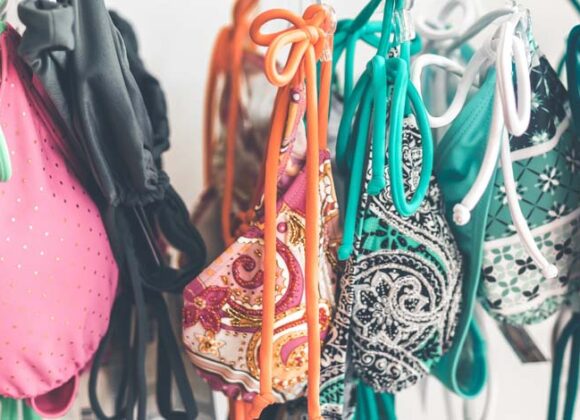Packing for travel is rarely a one-size-fits-all task—especially when your itinerary spans multiple climates. Whether you’re heading from the snowy peaks of the Alps to the sun-drenched beaches of Thailand, or navigating a single country with wildly varying weather, knowing how to pack smartly is essential. This comprehensive 10-step guide will help you prepare for any climate, with practical tips on choosing cold weather travel clothes, layering techniques, and space-saving hacks.
🌍 Step 1: Understand Your Destination’s Climate
Before you even unzip your suitcase, take time to research the climate of your destination(s). This includes average temperatures, humidity levels, seasonal changes, and potential weather events like monsoons or snowstorms. Use weather apps, travel blogs, and local tourism sites to get accurate forecasts.
If you’re visiting multiple regions or countries, note the differences in elevation and latitude. For example, traveling from Kathmandu to Pokhara in Nepal involves a shift from mountainous cold to subtropical warmth. Understanding these variations helps you pack strategically and avoid overpacking.
🧥 Step 2: Prioritize Layering Over Bulk
Layering is the golden rule of packing for different climates. Instead of packing bulky items, choose lightweight layers that can be added or removed as needed. This approach not only saves space but also gives you flexibility in unpredictable weather.
Start with a moisture-wicking base layer to regulate body temperature. Add an insulating mid-layer like a fleece or merino wool sweater. Finish with a waterproof and windproof outer shell. This three-layer system works for both cold and transitional climates.
For warm weather, layering still applies. A tank top under a breathable shirt, paired with a light jacket, can transition you from sunny afternoons to cooler evenings.
🧊 Step 3: Choose Cold Weather Travel Clothes That Pack Light
Packing for cold climates doesn’t mean stuffing your suitcase with heavy coats. Instead, opt for cold weather travel clothes that offer warmth without bulk:
- Thermal base layers: Look for merino wool or synthetic fabrics that trap heat.
- Insulated jackets: Down or synthetic puffers compress easily and provide excellent warmth.
- Fleece-lined leggings or pants: These are cozy and lightweight.
- Accessories: Gloves, beanies, scarves, and thermal socks are small but essential.
- Footwear: Waterproof boots with good insulation are a must for snowy or wet conditions.
Avoid cotton in cold climates—it retains moisture and can make you feel colder. Instead, choose technical fabrics designed for performance and warmth.
☀️ Step 4: Pack Smart for Hot and Humid Climates
When traveling to tropical or desert regions, your goal is to stay cool and protected from the sun. Choose breathable, lightweight fabrics like cotton, linen, and moisture-wicking synthetics. These materials allow airflow and dry quickly.
Essentials for hot climates include:
- Loose-fitting tops and shorts
- Maxi dresses or skirts made of airy fabrics
- UV-protective sunglasses and wide-brimmed hats
- Lightweight raincoat or poncho for sudden downpours
- Sandals or breathable sneakers
Stick to light colors that reflect sunlight and keep you cooler. Avoid dark or synthetic fabrics that trap heat.
🎒 Step 5: Use Packing Cubes to Stay Organized
Packing cubes are a game-changer when organizing clothes for different climates. Use them to separate warm-weather gear from cold-weather essentials. This makes it easier to access what you need without unpacking everything.
You can also organize by activity—casual wear, hiking gear, swimwear, etc. Compression cubes help reduce bulk and maximize space, especially when packing thicker items like sweaters or jackets.
👟 Step 6: Choose Versatile Footwear
Shoes take up a lot of space, so choose wisely. Aim for two to three pairs that cover all your needs:
- Waterproof boots for cold or rainy climates
- Breathable sneakers for walking and casual wear
- Sandals or flip-flops for beach destinations
If you’re hiking, invest in lightweight trail shoes that offer support and grip. For urban travel, stylish yet comfortable walking shoes are ideal. Always break in new shoes before your trip to avoid blisters.
🧴 Step 7: Tailor Your Toiletries to the Climate
Your skincare and hygiene needs change with the climate. In cold weather, your skin may become dry and chapped, so pack:
- Heavy moisturizers
- Lip balm with SPF
- Hydrating serums
- Hand cream
In hot or humid climates, focus on:
- Oil-free sunscreen
- Anti-frizz hair products
- Deodorant wipes
- Aloe vera gel for sunburn relief
Don’t forget insect repellent for tropical destinations and a small first-aid kit for unexpected scrapes or blisters.
🧢 Step 8: Accessorize for Adaptability
Accessories are lightweight, versatile, and often overlooked. They can dramatically improve your comfort and style across climates:
- Scarves: Use as a wrap, head cover, or blanket.
- Hats: Protect from sun or retain heat.
- Sunglasses: Essential for both snow glare and tropical sun.
- Umbrella: Compact travel umbrellas are great for rain or shade.
- Buffs or neck gaiters: Useful in dusty, cold, or windy environments.
These items take up minimal space and offer maximum utility.
📦 Step 9: Pack Dual-Purpose Clothing
Dual-purpose items save space and simplify your wardrobe. Look for clothing that can be dressed up or down, layered, or converted:
- Convertible pants that zip off into shorts
- Reversible jackets for style variety
- Multi-use scarves that double as shawls or beach wraps
- Wrinkle-resistant dresses that work for both day and night
Technical fabrics like nylon or polyester are great for travel—they’re lightweight, quick-drying, and durable.
🧾 Step 10: Create a Climate-Specific Packing Checklist
Before you zip up your suitcase, run through a checklist tailored to your destination’s climate. This ensures you don’t forget essentials and helps you avoid overpacking.
Here’s a sample checklist for mixed climates:
Cold Weather Travel Clothes
- Thermal base layers
- Insulated jacket
- Fleece or wool sweater
- Waterproof boots
- Gloves, hat, scarf
- Warm socks
Warm Weather Essentials
- Breathable tops and shorts
- Lightweight dresses or skirts
- Sun hat and sunglasses
- Sandals or flip-flops
- Rain poncho
Universal Items
- Packing cubes
- Toiletries
- Travel adapter
- Reusable water bottle
- First-aid kit
Customize your list based on activities—hiking, swimming, formal events—and cultural norms. For example, modest clothing may be required in certain countries, regardless of climate.
✈️ Bonus Tips for Packing Like a Pro
- Roll your clothes to save space and reduce wrinkles.
- Use vacuum-seal bags for bulky items like jackets.
- Pack a day bag for excursions with essentials like snacks, sunscreen, and a light jacket.
- Leave room for souvenirs by packing only what you need.
- Weigh your luggage before heading to the airport to avoid extra fees.
🌐 Final Thoughts
Packing for different climates doesn’t have to be stressful. With the right strategy, you can travel light while staying comfortable and stylish across any weather condition. Focus on layering, choose cold weather travel clothes that compress easily, and use packing cubes to stay organized. Whether you’re chasing the sun or braving the snow, this 10-step guide ensures you’re ready for anything.




